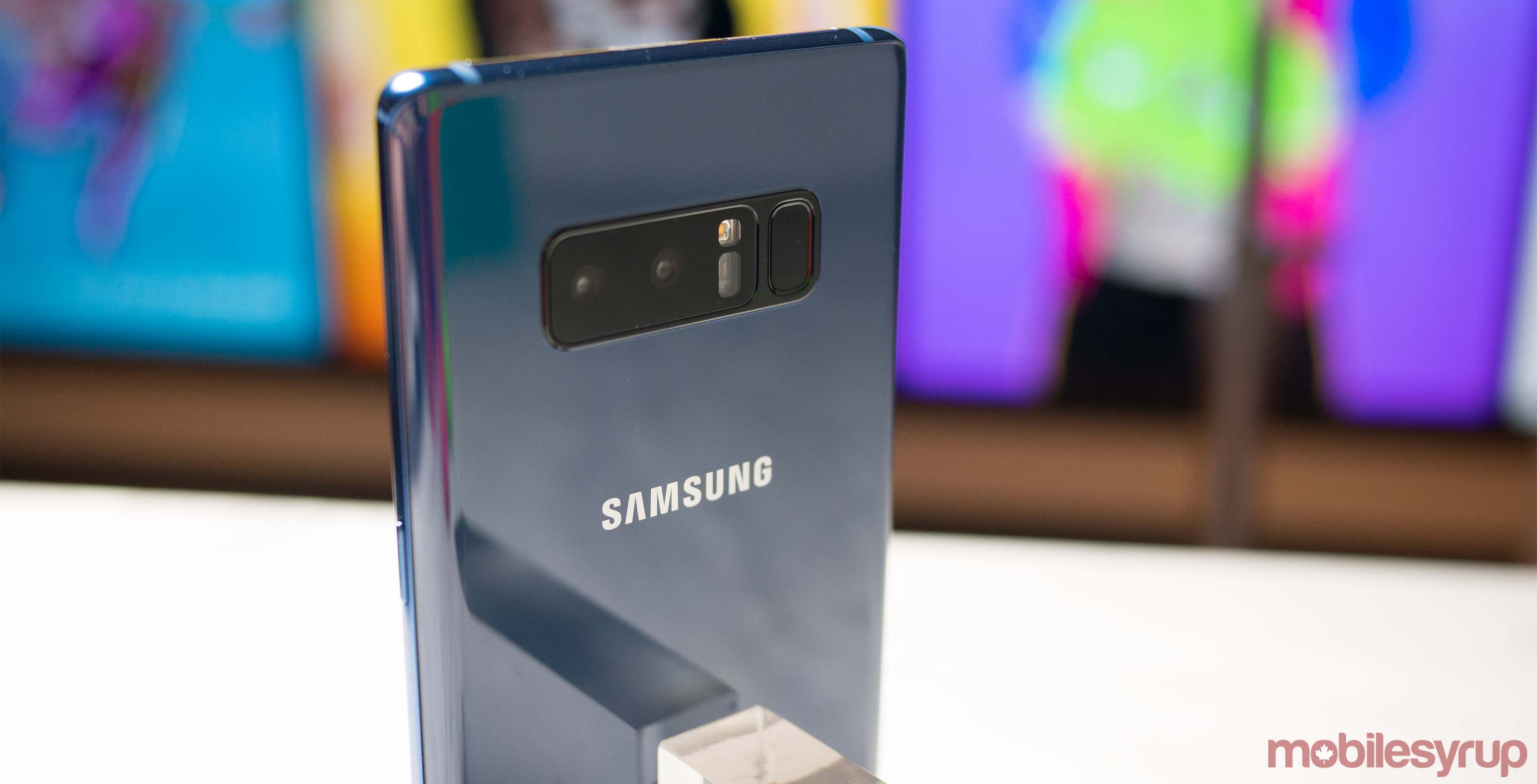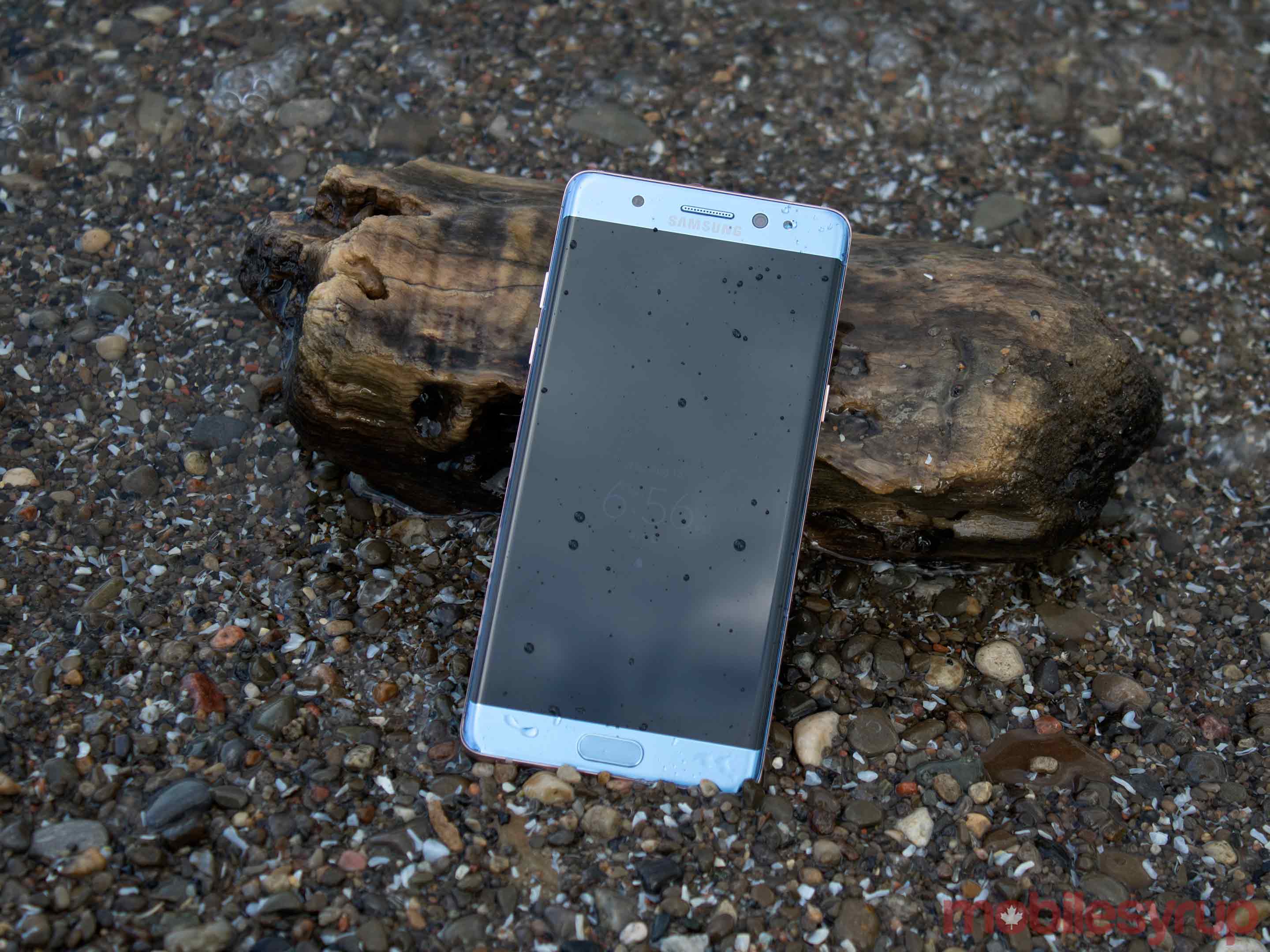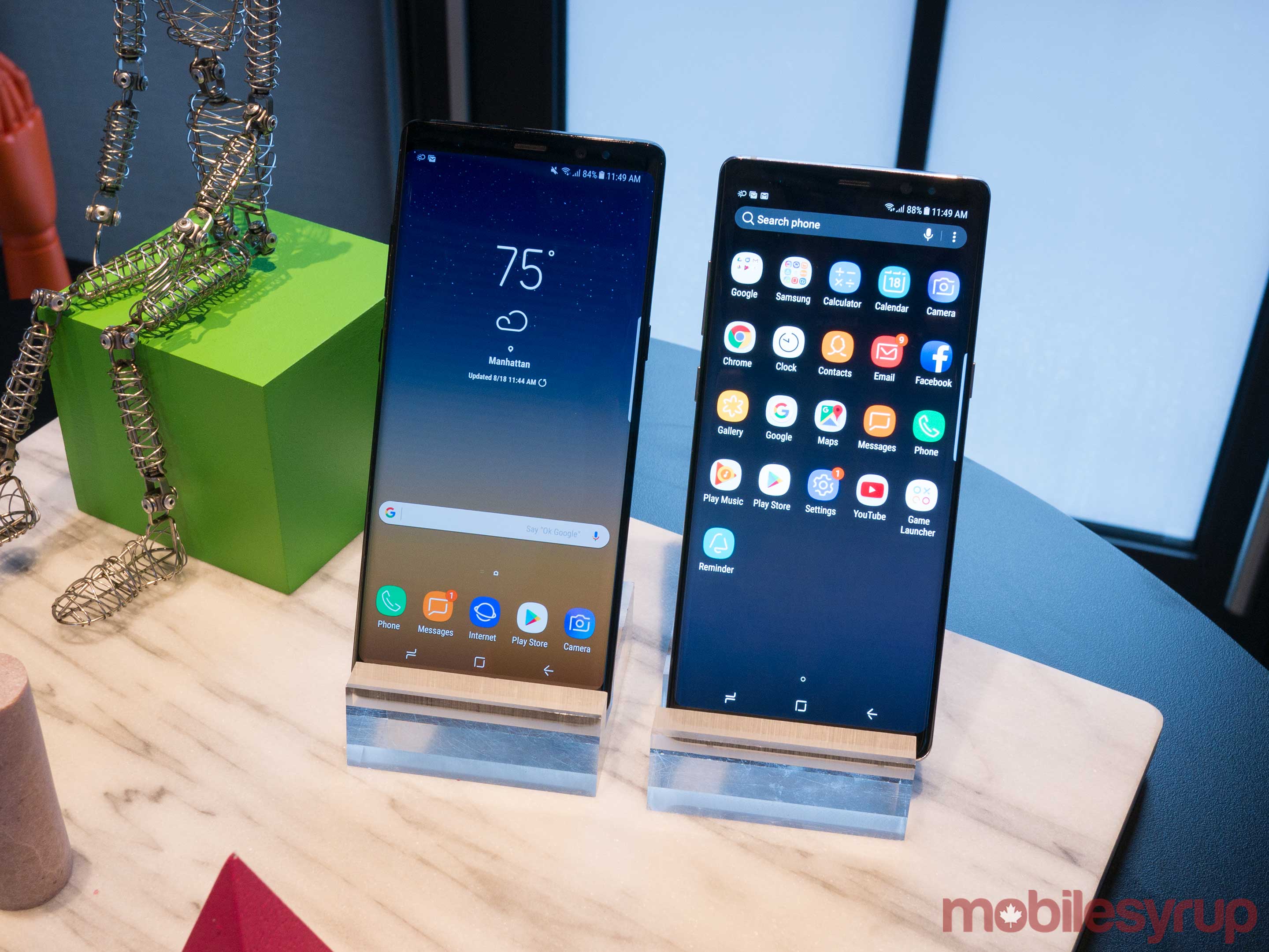
Samsung’s Galaxy Note 8 is here and fans of phablets can breathe a sigh of relief.
The company’s latest device continues the company’s trend of releasing a beefed-up, gargantuan version of its flagship Galaxy S devices, that doesn’t skimp on specs or battery life.
The Note 8 is large, it’s powerful, it’s long-lasting, and yes, it still retains the Note line’s staple S Pen. That being said, how does the Note 8 compare to its older Note siblings?
Samsung Galaxy Note 8
Samsung Galaxy Note 7
Samsung Galaxy Note 5
Display
6.3-inch, Super AMOLED display, 1440 x 2960 pixels, 18:5:9 aspect ratio, HDR 10
5.7-inch Super AMOLED capacitive touchscreen, 1440 x 2560 pixels
5.7 inch Super AMOLED capacitive touchscreen, 16M colours
Processor
Snapdragon 835 (Exynos 8895)
Quad-core 64-bit (2.15GHz dual + 1.6GHz dual) Qualcomm Snapdragon 820
Exynos 7420 Octa
RAM
6GB RAM
4GB RAM
4GB of RAM
Storage
64GB (expandable up to 256GB)
64GB
32/64/128 GB
Dimensions (in.)
162.5mm x 74.6mm x 8.5mm
153.5mm x 73.9mm x 7.9mm
153.2 x 76.1 x 7.6 mm
Weight
195g
169 g
171 g
Rear Facing Camera
12-megapixel (f/1.7) + 12-megapixel (f.2.4, OIS, AF) dual-LED flash
12-megapixel f/1.7 camera with OIS (optical image stabilization), 4K video
16-megapixel with f.19 autofocus and LED flash
Front Facing Camera
8-Megapixel (f/1.7)
5-megapixel camera
5-megapixel with LED flash
OS
Android 7.1 Nougat
Android 6.0.1 Marshmallow
Android 5.1.1 upgradeable to Android 7.0 (Nougat)
Battery
3,300mAh
Non-removable Li-Ion 3500 mAh battery
Non-removable Li-Po 3000 mAh battery
Network Connectivity
GSM / HSPA / LTE
GSM/HSPA/LTE, WiFi 802.11 a/b/g/n/ac (2.4/5GHz), MIMO (2×2) 620Mbps, NFC, Bluetooth v 4.2 LE, ANT+
GSM / HSPA / LTE
Sensors
Iris scanner, fingerprint (rear-mounted), accelerometer, gyro, proximity, compass, barometer, heart rate, SpO2
Barometer, Fingerprint Sensor, Gyro Sensor, Geomagnetic Sensor, Hall Sensor, HR Sensor, Iris Sensor, Proximity Sensor, RGB Light Sensor
Fingerprint (front-mounted), accelerometer, gyro, proximity, compass, barometer, heart rate, SpO2
SIM Type
Nano SIM
Nano SIM
Nano SIM
Launch Date
August 23, 2017
August 19, 2016
August 21, 2015
Misc
Colours: Black, Blue | IP68 water/dust resistant, S-Pen, 18:9 aspect ratio, wireless charging, USB type C
Recalled on October 10th, 2016
Samsung S Pen, Black Sapphire, Gold Platinum, Silver Titan, White Pearl
Display
Samsung Galaxy Note 8
6.3-inch, Super AMOLED display, 1440 x 2960 pixels, 18:5:9 aspect ratio, HDR 10
Samsung Galaxy Note 7
5.7-inch Super AMOLED capacitive touchscreen, 1440 x 2560 pixels
Samsung Galaxy Note 5
5.7 inch Super AMOLED capacitive touchscreen, 16M colours
Processor
Samsung Galaxy Note 8
Snapdragon 835 (Exynos 8895)
Samsung Galaxy Note 7
Quad-core 64-bit (2.15GHz dual + 1.6GHz dual) Qualcomm Snapdragon 820
Samsung Galaxy Note 5
Exynos 7420 Octa
RAM
Samsung Galaxy Note 8
6GB RAM
Samsung Galaxy Note 7
4GB RAM
Samsung Galaxy Note 5
4GB of RAM
Storage
Samsung Galaxy Note 8
64GB (expandable up to 256GB)
Samsung Galaxy Note 7
64GB
Samsung Galaxy Note 5
32/64/128 GB
Dimensions (in.)
Samsung Galaxy Note 8
162.5mm x 74.6mm x 8.5mm
Samsung Galaxy Note 7
153.5mm x 73.9mm x 7.9mm
Samsung Galaxy Note 5
153.2 x 76.1 x 7.6 mm
Weight
Samsung Galaxy Note 8
195g
Samsung Galaxy Note 7
169 g
Samsung Galaxy Note 5
171 g
Rear Facing Camera
Samsung Galaxy Note 8
12-megapixel (f/1.7) + 12-megapixel (f.2.4, OIS, AF) dual-LED flash
Samsung Galaxy Note 7
12-megapixel f/1.7 camera with OIS (optical image stabilization), 4K video
Samsung Galaxy Note 5
16-megapixel with f.19 autofocus and LED flash
Front Facing Camera
Samsung Galaxy Note 8
8-Megapixel (f/1.7)
Samsung Galaxy Note 7
5-megapixel camera
Samsung Galaxy Note 5
5-megapixel with LED flash
OS
Samsung Galaxy Note 8
Android 7.1 Nougat
Samsung Galaxy Note 7
Android 6.0.1 Marshmallow
Samsung Galaxy Note 5
Android 5.1.1 upgradeable to Android 7.0 (Nougat)
Battery
Samsung Galaxy Note 8
3,300mAh
Samsung Galaxy Note 7
Non-removable Li-Ion 3500 mAh battery
Samsung Galaxy Note 5
Non-removable Li-Po 3000 mAh battery
Network Connectivity
Samsung Galaxy Note 8
GSM / HSPA / LTE
Samsung Galaxy Note 7
GSM/HSPA/LTE, WiFi 802.11 a/b/g/n/ac (2.4/5GHz), MIMO (2×2) 620Mbps, NFC, Bluetooth v 4.2 LE, ANT+
Samsung Galaxy Note 5
GSM / HSPA / LTE
Sensors
Samsung Galaxy Note 8
Iris scanner, fingerprint (rear-mounted), accelerometer, gyro, proximity, compass, barometer, heart rate, SpO2
Samsung Galaxy Note 7
Barometer, Fingerprint Sensor, Gyro Sensor, Geomagnetic Sensor, Hall Sensor, HR Sensor, Iris Sensor, Proximity Sensor, RGB Light Sensor
Samsung Galaxy Note 5
Fingerprint (front-mounted), accelerometer, gyro, proximity, compass, barometer, heart rate, SpO2
SIM Type
Samsung Galaxy Note 8
Nano SIM
Samsung Galaxy Note 7
Nano SIM
Samsung Galaxy Note 5
Nano SIM
Launch Date
Samsung Galaxy Note 8
August 23, 2017
Samsung Galaxy Note 7
August 19, 2016
Samsung Galaxy Note 5
August 21, 2015
Misc
Samsung Galaxy Note 8
Colours: Black, Blue | IP68 water/dust resistant, S-Pen, 18:9 aspect ratio, wireless charging, USB type C
Samsung Galaxy Note 7
Recalled on October 10th, 2016
Samsung Galaxy Note 5
Samsung S Pen, Black Sapphire, Gold Platinum, Silver Titan, White Pearl
The first major point of comparison is the Note 8’s screen. The new phablet features a 6.3-inch, bezel-less display, carried over from the S8 and S8+, and it truly does look stunning — 83.1 percent of this device is screen, and it shows. The bezel-less display removes the phone’s forehead and chin, and unlike its older siblings, the Note 8 has its fingerprint sensor on its rear.
The Note 8 has 6GB of memory, in comparison to the Note 7’s and the Note 5’s 4GB. It also comes with 64GB of internal storage, just like the Note 7 and one model of the Note 5 — which also came in a 32GB and 128GB variant. You can also upgrade the Note 8’s storage with an SD card, meaning you can add an additional 256GB of internal memory.
Continuing a trend established by most of this year’s flagship devices, the Note 8 features a dual-camera set-up. The dual, 12-megapixel cameras have a f/1.7 and f/2.4 aperture, that allow for a whole host of digital photography tricks.

Of course, there is one notable area where the Note 8 is actually a regression from its Note 7 predecessor: battery size.
Rest assured, dear reader, there will be no explosion puns in this story. The Note 8 has a 3,300mAh battery, in contrast to the Note 7’s 3,500mAh. The decision to release the Note 8 with a smaller battery speaks to Samsung’s commitment to reducing the battery size on all of their current-gen flagship devices, as a direct result of the Note 7’s battery issues.
For those would-be Note 8 owners concerned about battery life, however, there shouldn’t be much reason to worry. Between the Snapdragon 835 processor and the fact that the Note 8 is running a restrained — for Samsung, anyway — skin of Android 7.1, the device will no doubt be able to last through a day of heavy use.

While the Note 8’s specs are undeniably beefy, it really should be stated that the device shares a number of philosophical similarities with its older siblings. The Note line of phablets is Samsung’s way of taking their Galaxy S flagships and making them bigger, while adding an S Pen.
As a result, the Note 8 is certainly the best device Samsung has ever released, but it nonetheless continues the bigger, badder trend that the Note line has previously established.
MobileSyrup may earn a commission from purchases made via our links, which helps fund the journalism we provide free on our website. These links do not influence our editorial content. Support us here.


